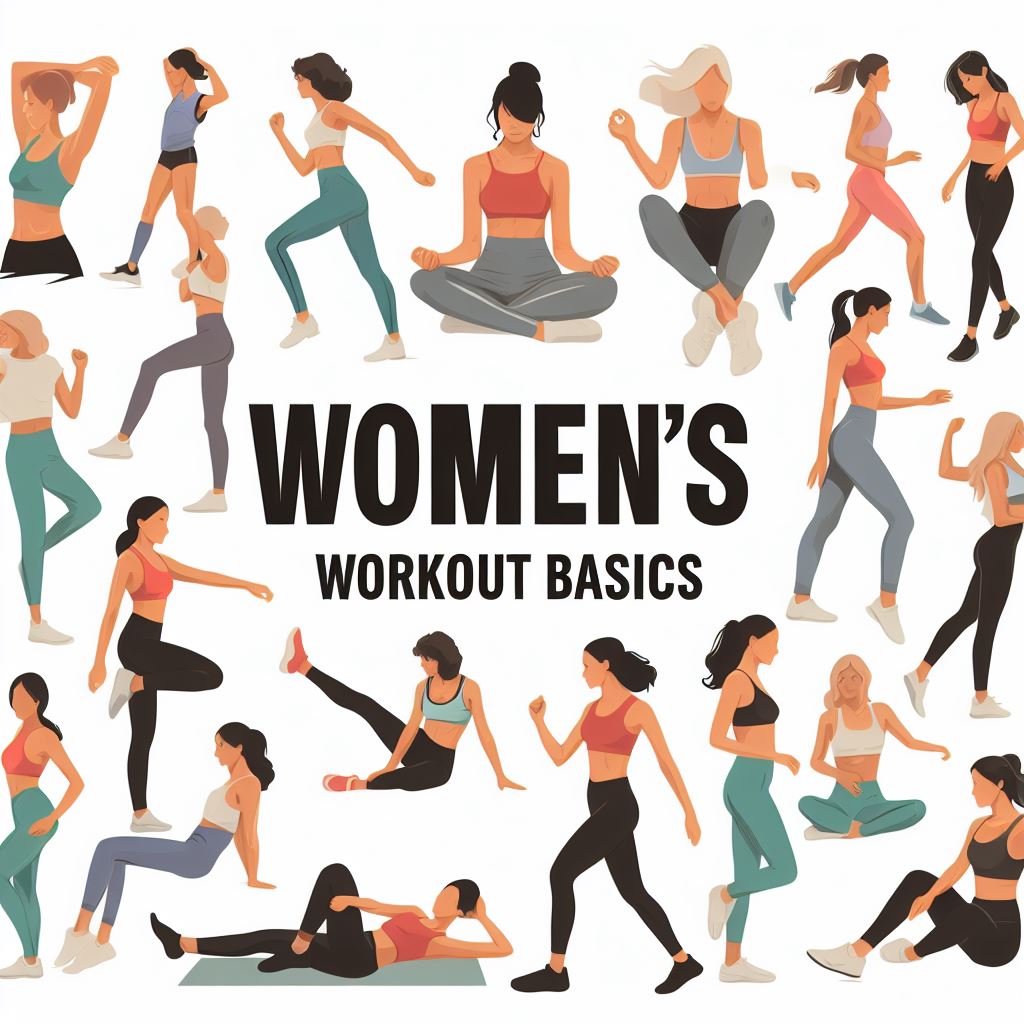
Introduction
When it comes to fitness and exercise, women have unique needs and considerations. Women’s bodies are designed differently from men’s, and their workout routines should reflect these differences. Whether you’re a beginner just starting your fitness journey or a seasoned athlete looking to switch up your routine, understanding the basics of women’s workouts is essential for achieving optimal results.
In this article, we will explore the fundamental principles of women’s workout routines. We will delve into the importance of strength training, cardiovascular exercises, and flexibility training. Additionally, we will discuss the benefits of incorporating a well-rounded fitness regimen into your lifestyle, including improved overall health, increased energy levels, and enhanced body composition.
Furthermore, we will address common misconceptions surrounding women’s workouts, such as the fear of bulking up and the belief that certain exercises are only suitable for men. By debunking these myths, we aim to empower women to embrace their strength and pursue their fitness goals without limitations.
Whether you prefer hitting the gym, working out at home, or participating in group fitness classes, this article will provide you with the knowledge and guidance to design an effective and enjoyable workout routine tailored specifically for women. Let’s embark on this fitness journey together and unlock your full potential!
Women’s Workout Basics
When it comes to women’s workout routines, it’s important to focus on three key areas: strength training, cardiovascular exercises, and flexibility training. By incorporating these elements into your fitness regimen, you can achieve a well-rounded and effective workout routine that caters to your specific needs and goals.
Strength Training
Contrary to popular belief, strength training is not just for men. In fact, it is an essential component of women’s workouts. Strength training helps build lean muscle mass, which not only improves overall strength but also boosts metabolism and aids in weight management. Additionally, it plays a crucial role in enhancing bone density and reducing the risk of osteoporosis, a condition more prevalent in women.
When engaging in strength training, it’s important to focus on compound exercises that target multiple muscle groups simultaneously. Exercises such as squats, deadlifts, lunges, and push-ups are highly effective in building strength and toning the body. Start with lighter weights and gradually increase the intensity as you progress.
Cardiovascular Exercises
Cardiovascular exercises are vital for improving cardiovascular health, burning calories, and increasing endurance. Engaging in regular cardio workouts helps reduce the risk of heart disease, lowers blood pressure, and improves overall well-being.
There are various cardio exercises that women can incorporate into their workouts, including running, cycling, swimming, dancing, and high-intensity interval training (HIIT). Aim for at least 150 minutes of moderate-intensity cardio or 75 minutes of vigorous-intensity cardio per week. Remember to start slowly and gradually increase the duration and intensity of your workouts.
Flexibility Training
Flexibility training is often overlooked but is crucial for maintaining joint mobility, preventing injuries, and improving overall flexibility. Women tend to have naturally greater flexibility than men, but it’s still important to work on maintaining and improving it.
Incorporate stretching exercises into your workout routine, focusing on all major muscle groups. Yoga and Pilates are excellent options for improving flexibility while also promoting relaxation and stress reduction. Aim for at least two to three sessions of flexibility training per week.
Conclusion
Understanding the basics of women’s workout routines is essential for achieving optimal results and maintaining overall health and well-being. By incorporating strength training, cardiovascular exercises, and flexibility training into your fitness regimen, you can create a balanced and effective workout routine that caters to your unique needs. Remember to listen to your body, start slowly, and gradually increase the intensity and duration of your workouts. Stay consistent, stay motivated, and embrace the journey towards a stronger, fitter, and healthier you!
Practical Recommendations
1. Set Clear Goals
Before starting any workout routine, it’s essential to set clear and realistic goals. Determine what you want to achieve, whether it’s building strength, losing weight, improving endurance, or enhancing overall fitness. Setting specific goals will help you stay focused and motivated throughout your fitness journey.
2. Find Activities You Enjoy
Exercise doesn’t have to be a chore. Find activities that you genuinely enjoy and look forward to. Whether it’s dancing, hiking, swimming, or playing a sport, incorporating activities you love will make your workouts more enjoyable and sustainable in the long run.
3. Prioritize Consistency
Consistency is key when it comes to seeing results. Make exercise a regular part of your routine by scheduling specific workout times and sticking to them. Aim for at least 150 minutes of moderate-intensity aerobic activity or 75 minutes of vigorous-intensity aerobic activity per week, along with strength training exercises at least two days a week.
4. Listen to Your Body
Pay attention to your body’s signals and adjust your workouts accordingly. If you feel pain or discomfort, modify or take a rest day to prevent injuries. It’s important to challenge yourself, but also to respect your body’s limits and give it the rest it needs to recover.
5. Seek Professional Guidance
If you’re new to exercise or unsure about proper form and technique, consider seeking guidance from a certified personal trainer or fitness professional. They can help design a workout plan tailored to your specific goals and ensure you’re performing exercises correctly to maximize results and minimize the risk of injury.
6. Incorporate Strength Training
Don’t shy away from strength training. It’s a vital component of women’s workouts and offers numerous benefits. Start with bodyweight exercises and gradually incorporate weights or resistance bands to challenge your muscles. Remember, strength training not only builds strength but also helps shape and tone your body.
7. Stay Hydrated and Fuel Your Body
Proper hydration is crucial for optimal performance and recovery. Drink plenty of water before, during, and after your workouts. Additionally, fuel your body with nutritious foods that provide the energy and nutrients needed for exercise. Incorporate a balanced diet rich in lean proteins, whole grains, fruits, vegetables, and healthy fats.
8. Don’t Forget to Rest and Recover
Rest and recovery are just as important as exercise itself. Allow your body time to rest and repair by incorporating rest days into your routine. Get enough sleep, as it plays a vital role in muscle recovery and overall well-being. Consider incorporating activities such as yoga or meditation to promote relaxation and reduce stress.
9. Track Your Progress
Keep track of your workouts, progress, and achievements. This will not only help you stay motivated but also allow you to see how far you’ve come. Use a fitness journal, mobile apps, or wearable fitness trackers to monitor your workouts, set new goals, and celebrate your accomplishments.
10. Stay Positive and Enjoy the Journey
Lastly, remember to stay positive and enjoy the journey. Fitness is a lifelong commitment, and there will be ups and downs along the way. Embrace the process, celebrate small victories, and focus on the positive changes you’re making in your overall health and well-being.
By following these practical recommendations, you can create a sustainable and effective workout routine that empowers you to reach your fitness goals and lead a healthier, more active lifestyle.






